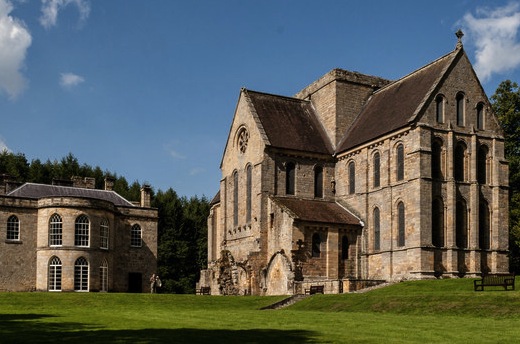Brinkburn Priory
Duncan Forbes
A doorway through a Norman arch.
Whispers echo at the silence,
Eyes adjusting to the dark
In cellar smells of ancient stonework
Void of worshippers and pews.
Sunlight through the stained-glass windows
Glazes terracotta tiles.
A bird is flying in the rafters.
Wildflowers drying on the altar
Are ragwort, knapweed, willowherb.
The Risen Christ by Fenwick Lawson,
Born in 1932,
Dominates the northern transept:
Displaying hands in benediction,
A giant airborne monk in beechwood
Hangs aloof on chains and metal.
Strange to find the resurrection
Signified by weight of wood:
Apotheosis of a tree-trunk
Posing as a rib of God.
Two girls are playing in the garden
With a length of fraying rope,
Moles have undermined the lawn,
Rosebay willowherb in sunlight
Seeds along the riverbank;
The water, noisy as a torrent,
Carves its channel out of sight.
Beech trees dominate the valley
Witnessing a prehistoric
Resurrection into leaf.
Brinkburn Priory in Northumberland was founded in the early 12th century during the reign of Henry I of England. It was dissolved in 1536. The buildings fell into ruin and only the priory church now survives, after restoration in the 19th century.
Duncan Forbes's poems of place can evoke faith, history and time as well as location. The Norman arch here, the Saxon carvings in his poem Anno Domini.
Main Location:
Brinkburn Priory, Longframlington, Morpeth, Northumberland NE65 8AR, UK

The Restored 12th century church of Brinkburn Priory, with the later manor house behind
Image by Kim Fyson, licensed under Creative Commons.